“Using the pick actually saved my hands”: Fever 333 bassist April Kae on the downside of multitasking as an artist and her love for the new Fender Player II Precision Bass
"I've really road-tested this. I've carried it across the country for the past month or so, and it's durable, comfortable, plays well, and has a great tone"
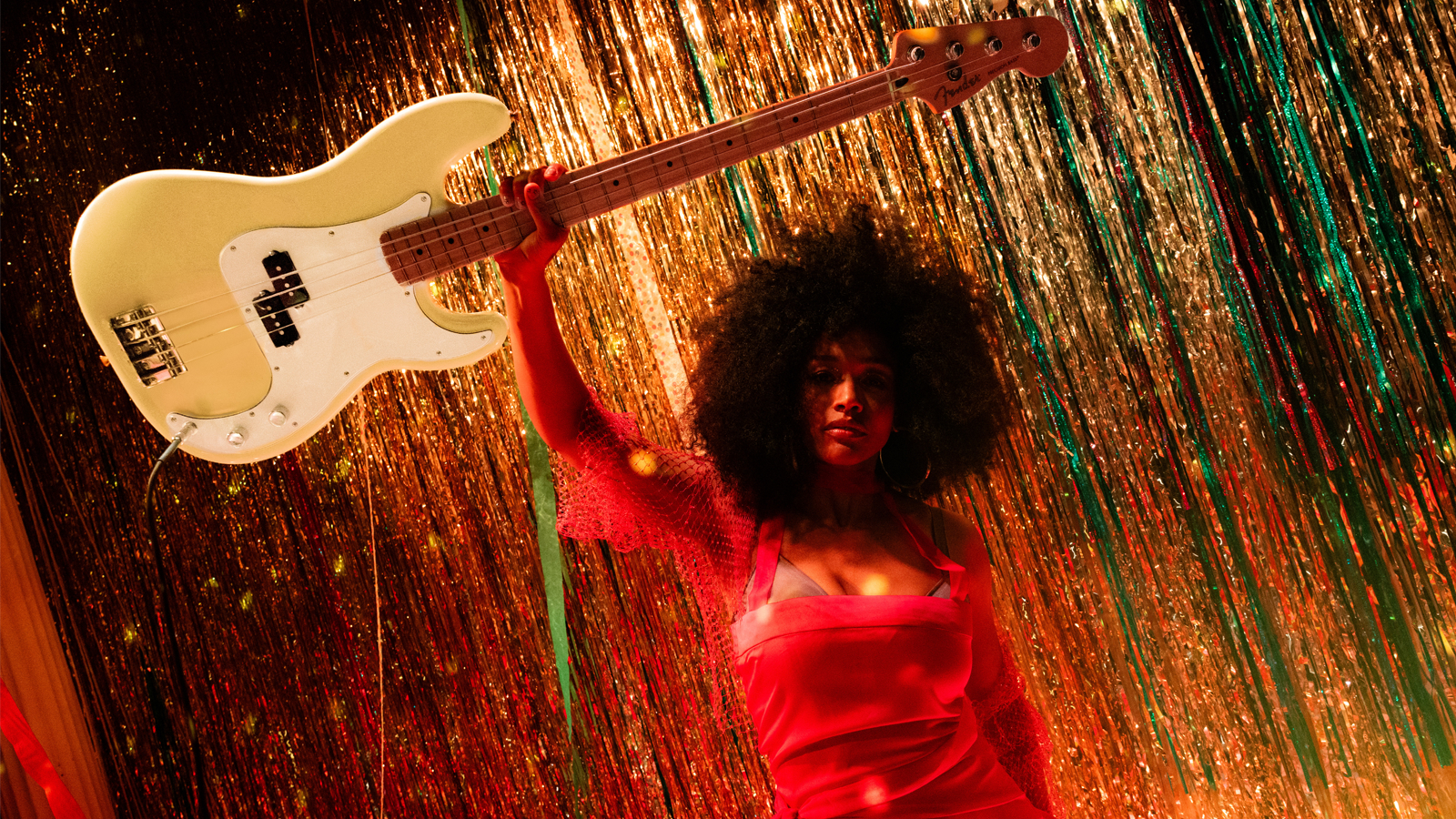
April Kae, often hailed as a virtual bass sensation, has transcended her TikTok roots to become a globe-trotting bass megastar. Her talents, however, extend far beyond the bass – Kae is also a singer, producer, model, political activist, and influential content creator. This versatility is a testament to her skill and creativity and is further highlighted by her recent role as the keeper of the low-end for rapcore outfit Fever 333, proving that she can excel in just about any musical genre.
Forming in 2017, Fever 333 began as a trio featuring former Letlive vocalist Jason Aalon Butler, former guitarist of The Chariot, Stephen Harrison and Night Verses drummer, Aric Improta. After both Harrison and Improta left the group in 2022, Butler was forced to recruit all new members – and one of them was April Kae.
Arguably most known for the off-white P-Bass she plays online, it would be this bass that caught the attention of the Fever 333 frontman. "Jason found me through my social media playing my P-Bass on TikTok," April recalls. "I think it might have been a Metallica cover that I did. We exchanged some DMs, we did a jam and then we became pretty fast friends and bandmates from there. It's been a great journey with Fever [333]."
Before April joined this new iteration of the band, Fever 333 didn’t have a full-time bass player, and with that comes a sense of freedom. Kae explains that she doesn’t feel the same level of pressure that the other new band members may feel.
“What I like about [Fever 333] is I have these bass lines, and I can kind of bring my own way of playing them,” Kae clarifies. “Jason gives me almost no notes. I think it's a good thing! I get more notes from Brandon [Davis] and Thomas [Pridgen], the guitar player and drummer, which I love. I love getting their input, and we all support each other and push each other musically,” Kae enthusiastically states.
“I'm the first bass player in the band. I don't have any issues. For Thomas and Brandon, people expect something from them because there was a guitar player and drummer in the past. But for me, a lot of it was producers who are also bass players or 808 bass lines.”
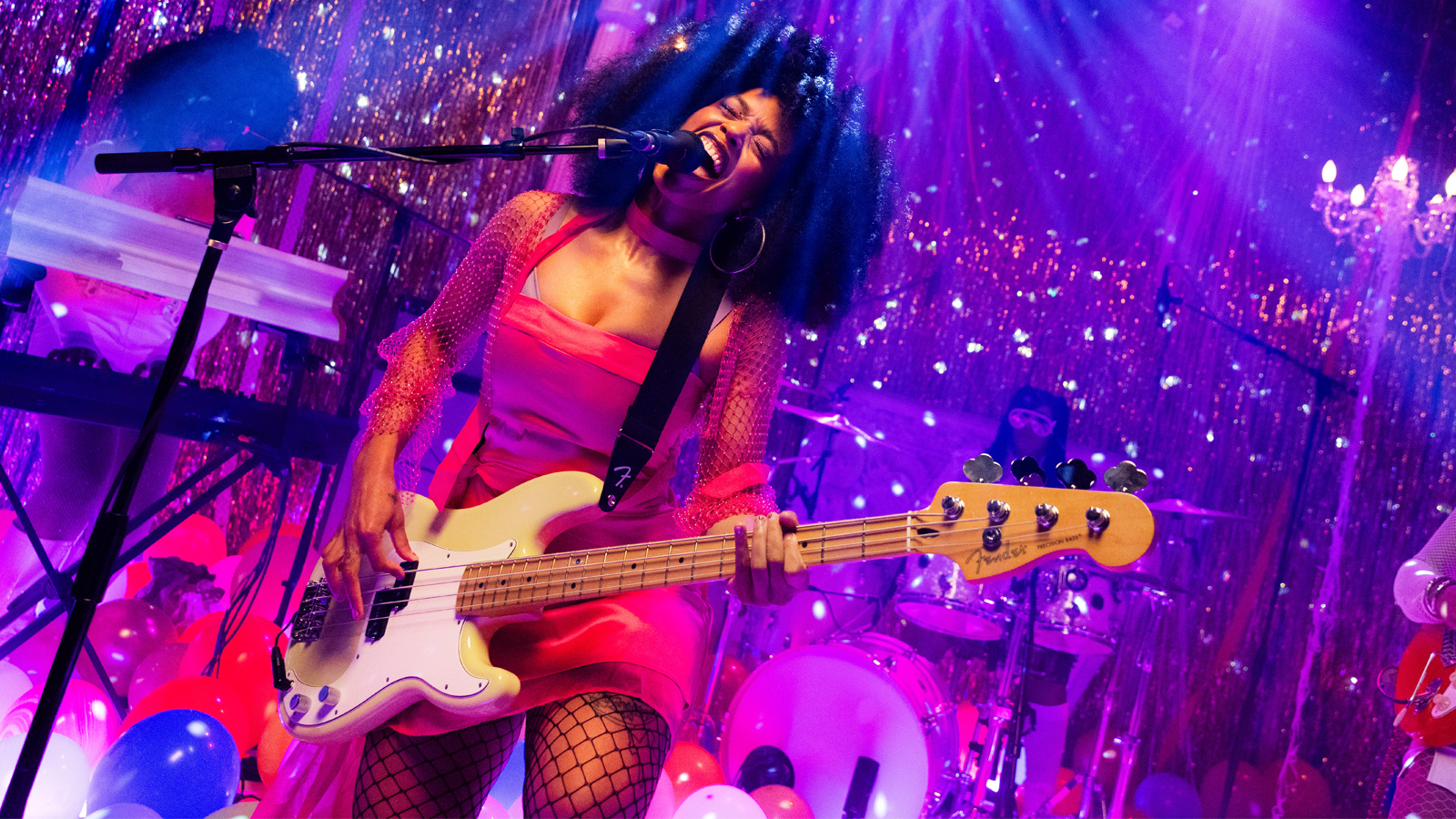
Adjusting to the pick has been a new challenge. I love playing with my fingers
Speaking of the challenges of playing the high-intensity riffs that come with a band that combines rap, metal, hardcore punk, and trap, Kae discloses that the practice of using a pick became the biggest hurdle.
Want all the hottest music and gear news, reviews, deals, features and more, direct to your inbox? Sign up here.
“I think if there's any challenge, to be honest, it's playing with a pick, ” says Kae. “I think some of those riffs just don't really work with fingers. I think it's fun to play them [with fingers], and it can work at home, but I think playing with the band and playing in that riff-based style [works better with a pick].
“Brandon is a super precise guitar player, which again, I love. It really pushes me,” beams Kae. “I started out playing jazz, so I can play it pretty fast and loose with the rhythms and keep it pretty fluid, but I think in the style of driving metal, having those really precise riffs is important.”
Carrying on about the challenges of adapting to a plectrum April says, “Adjusting to the pick has been a new challenge. I love playing with my fingers. I feel like it's part of the dance. I dance with my body and my hands, and it extends to my fingers. I’m trying to figure out how to do that with the pick and have the precision that I want. I think it's a challenge, but in a fun way, like a video game. I've got to master this level so I can do the next thing.”
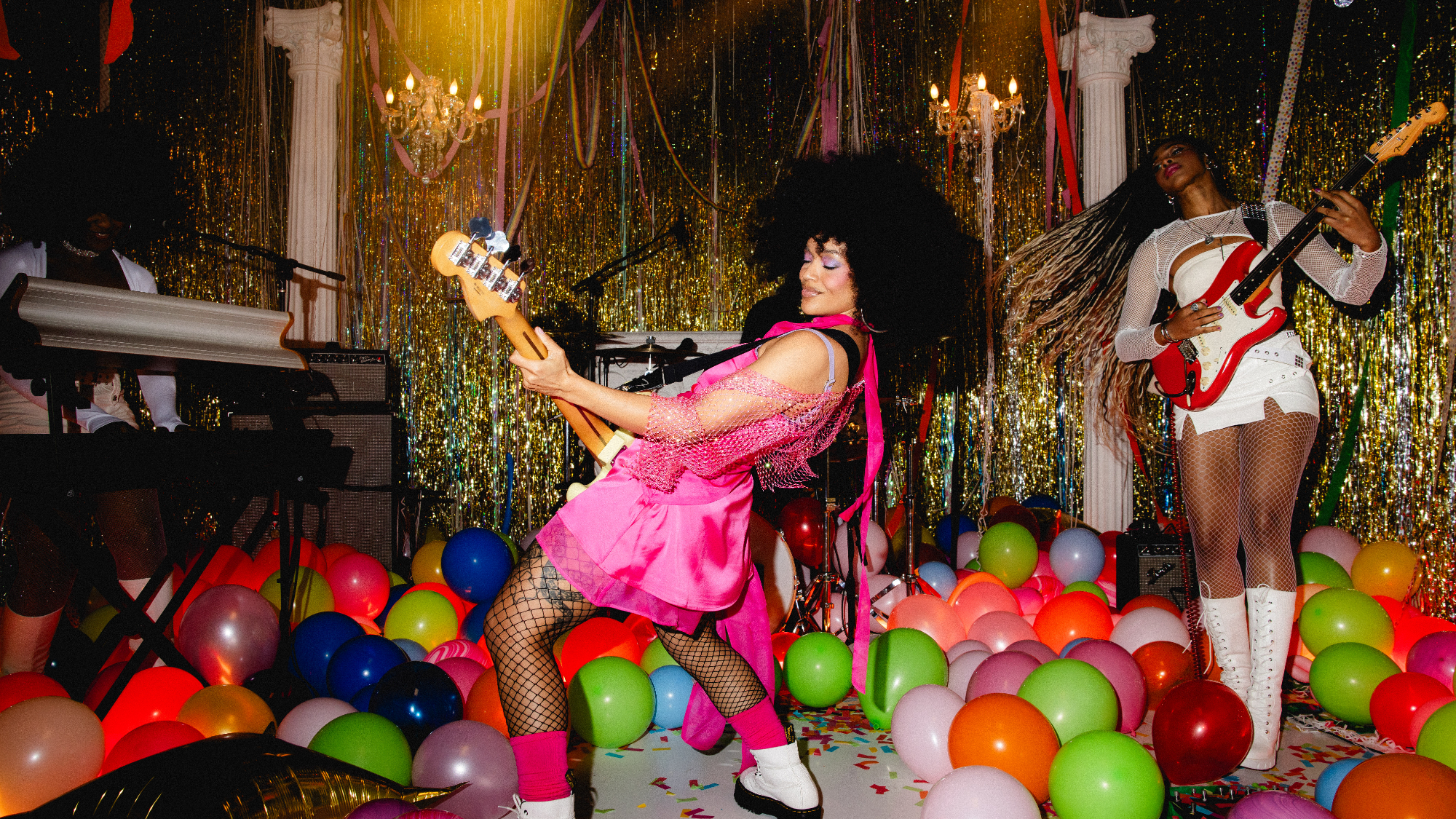
I f**ked my hands editing and producing. Literally, I was editing, producing video, producing music, producing bass and playing bass – and it f**ked my hands up
Now, if you play the bass as much as April, it seems like an inevitability that it would take its toll on your hands – but thankfully the pick would be April’s saving grace. “I had a hand injury from overuse, from using my fingers too much,” admits Kae. “Musicians have to be content creators and videographers and everything, right? That's a lot on your hands if you're an instrumentalist. I f**ked my hands editing and producing. Literally, I was editing, producing video, producing music, producing bass and playing bass – and it f**ked my hands up. You're not supposed to use your hands to do every single thing in the day, right? So using the pick actually saved my hands,” says Kae. “I like that I can do both now and incorporate both in my playing because I now have that versatility and I think it'll really help my longevity as a player.”
Now, if you are an in-demand bass player as much as April is, you can pretty much have your pick of any bass guitar you want – but as April recalls, she has been rather taken with Fender’s latest Mexican-made affordable option, the new Player II P-Bass.
Excited, April explains, “I got [my Fender Player II P-Bass] when we did the video shoot a month ago, and I have been playing it nonstop at home [since]. I practiced Fever 333 on it because Jason keeps my basses at his house. I've been playing my parts on it. I've been doing my sessions on it. It's probably one of my least expensive basses, and I play it all the time."
“It's really playable," April continues. “It's really comfortable. The tone is great. It's really versatile. That's why I think I've reached for it so much. Like, I can turn it up!”
It's really versatile and seems really well made
Speaking of how this affordable bass compares to her other instruments, Kae offers up some insight into why she loves the sound of the Player II so much. “This is so nerdy, but I have a bass that I made with Fender that I go to a lot. But I switched out the pickups [and now] it’s a lot less versatile. They're cool, but they're just less versatile. And so I will be playing that bass, and then I'll be like, I want this other sound, and I’ll grab [my Player II Precision Bass] – and then instead of switching back, I'll just stay on this bass and just turn the tone off to get a little bit of a sharper tone.
“It's really versatile and seems really well made. I've really road-tested this. I've carried it across the country for the past month or so, and it's durable, comfortable, plays well, and has a great tone.”
Now, it’s fair to say Fender’s newest P-Bass is more than up for the task of keeping up with a world-renowned bass player, but as April informs us, it’s also a great option for newbies looking for something that’s a definite step-up from the cheaply made entry-level basses that flood the beginner market.
“What I say about this bass is that if I were to start now, this would be the bass I would start on – not to say it's a super beginner bass,” clarifies Kae. “I played bass for three or four years before I bought one because I didn't have money. I played school basses and borrowed basses. When I bought my first bass, it was this sort of level and could work for an advanced [player, as well as a beginner].
“I really think any new bass player would be happy with it. I think the colours are cool, too. So it's a great one, I'd say, for people, again, in the first stages of playing.”
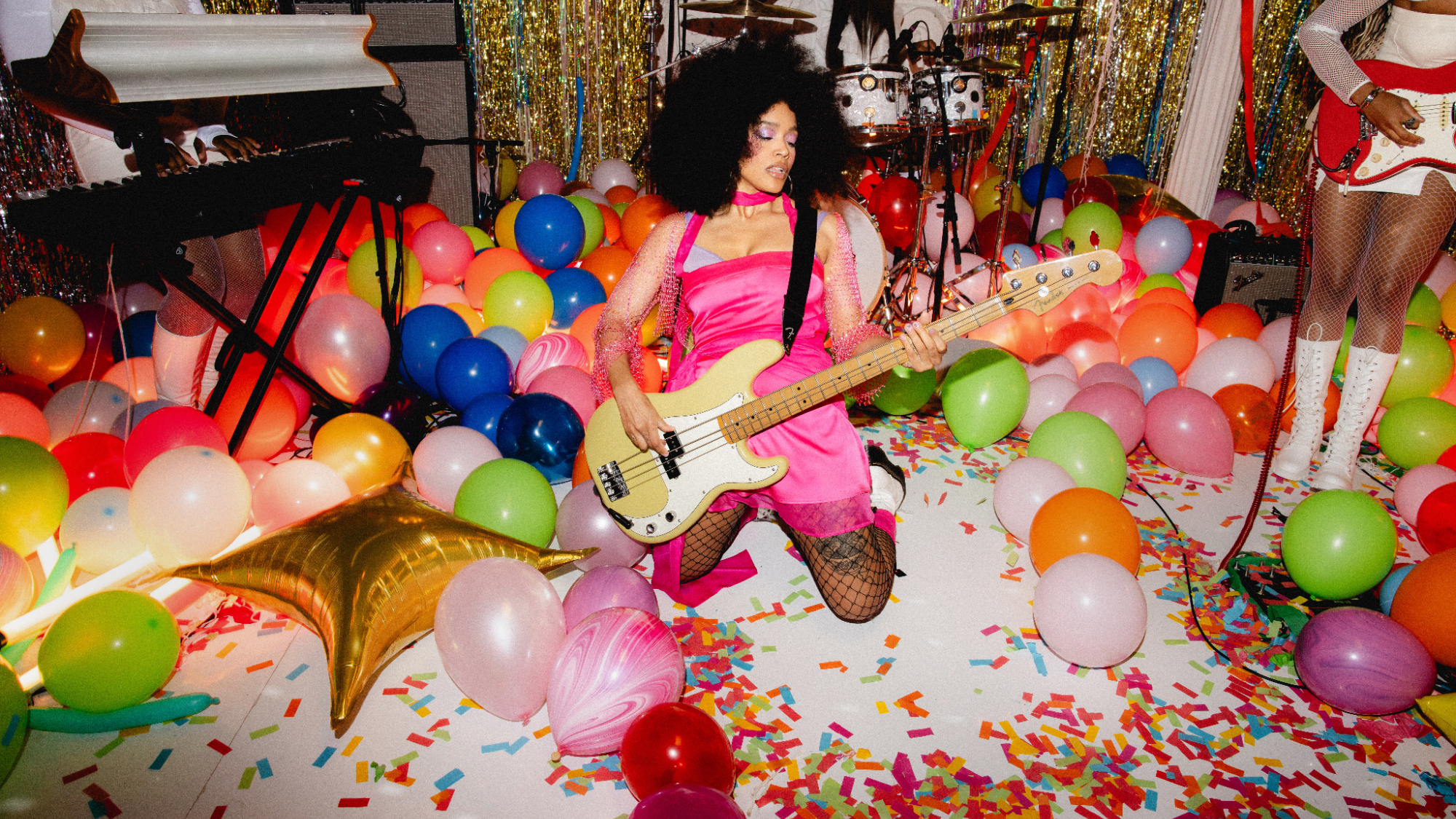
Continuing on the theme of rookie bass players and what they should look for in their first bass, April offers her advice on finding the perfect beginner bass guitar and offers some encouraging words on following your dreams and not giving up.
“So, I also teach bass. That's been a really exciting thing that has happened on the same timeline as Fever 333, which has just been so cool. It's really connected me to my community and to beginner-based players as I grow. I don't know if I need to stay grounded. I don't know if I'm the kind of person who wouldn't be grounded, but if anyone's helping me stay grounded, it's my students,” laughs Kae.
“I was not the kid who was in the band all through high school and got the gig right after. I was far from that. I worked on Wall Street, majored in economics, and worked in non-profits. I've lived a thousand lives.
“So, for me, I've kept playing, and I've kept pursuing it, you know? And so what is going to get you to do that? This new [Fender Player II P-Bass] does that for me. I know it sounds like a sales line, but I'm telling you my true life. It's in my living room. I can't even show [you the bass] because it's literally in my living room right now. That's how much I play it. It's not even in this room,” smiles Kae.
“That bass is fun and makes me want to play. So you've got to find a bass that's fun and makes you want to play. Find something that you love to play and are excited to pick up, and you want to go back to the store and play or look at pictures of.
“Don't worry about specs and things like that. If you want a seven-string, if that makes you excited, do it. If that's what you need, whatever gets you excited – that’s the main thing.
“And then my other thing is, if you can, play as many basses as possible. And I know that's not accessible to everyone, but going to guitar shops or speaking to people at churches and [getting advice] from other bass players is important.
"I've never had a bass player be like, ‘No, you can't play my bass.’ Instead, it's like, ‘Oh, let me tell you all about it.’ I think that's my biggest advice. Find something you love to play, play as many basses as possible and talk to other bass players.”
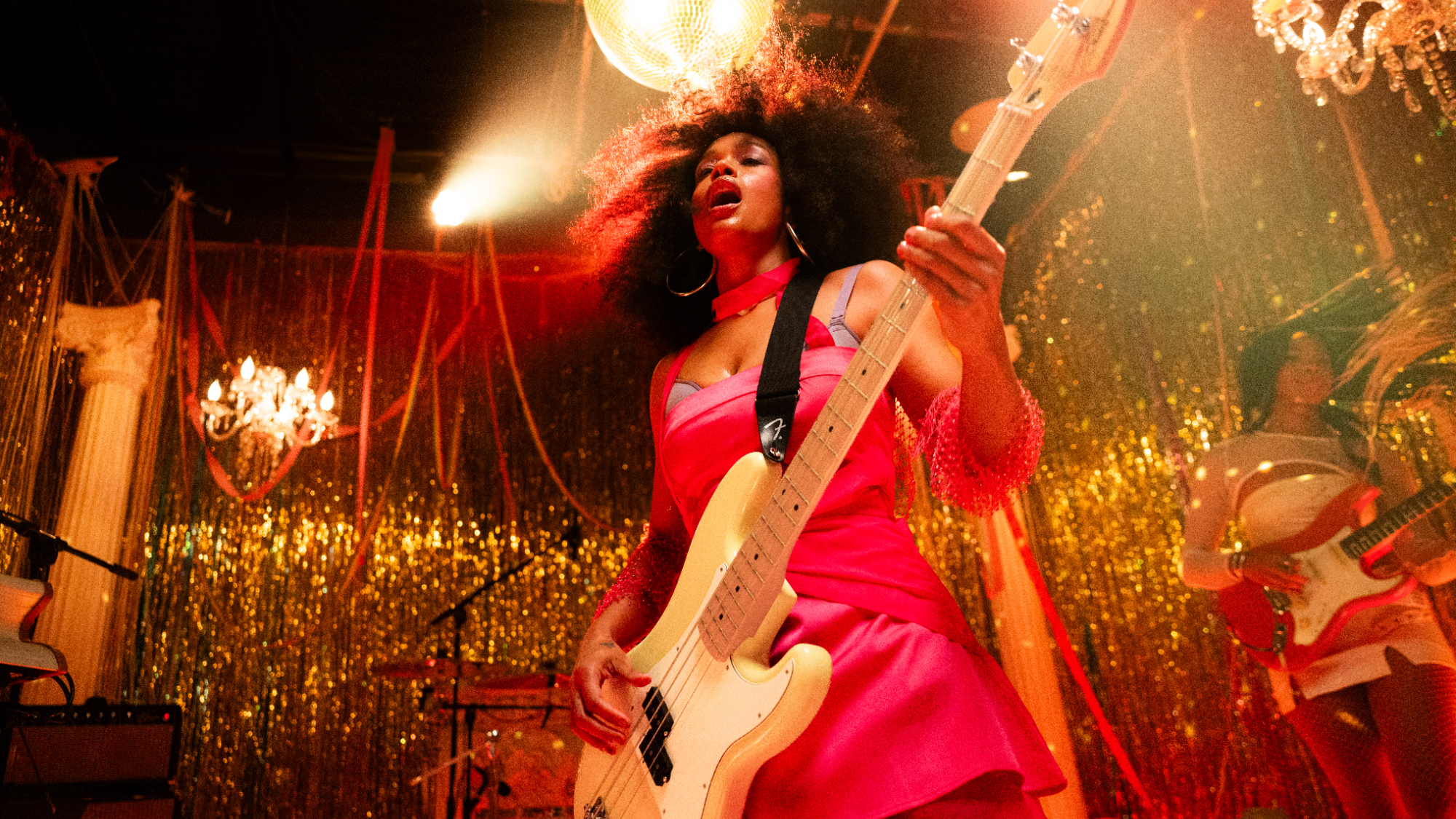
There's a really distinct tone that you get from the two pickups and the way that they're placed
When pressed on why she gravitates towards the P-Bass over something like a Jazz Bass or even more modern variants, April offers up her views on the subject, admitting that it all comes down to tone at the end of the day.
“I think for me, ultimately, it's the classic tone when it really comes down to it. I grew up listening to a lot of different types of music. The James Jamerson connection is always going to be there. That's always important, but I think that beyond that, it's just throughout so many genres throughout my life. So many records that maybe I didn't even know when I was a kid had these dope bass lines. I go back and listen, and it's probably a P-Bass, right? And so that is definitely what I think draws me back to it. It's that classic sound,” expresses Kae.
“There's a really distinct tone that you get from the two pickups and the way that they're placed,” continues April. “If you listen to it and play it enough, you sort of get a feel for it.”
“The other bass I play is like a Charvel that has the PJ thing going on. It feels a lot like a P-Bass, but it's different, and I don't reach for it for as diverse of things, I would say. Actually, I use that more for lead bass, so you'll see that online a lot. It's a great lead bass, but for a band, I like that feeling of the pocket, and the P-Bass really nails that.”
“The [Precision Bass] has that deeper tone compared to the Jazz Bass. It has this kind of depth and roundness, but that also can really cut through. And so I think that really helps the distortion in a lovely way – it hits my ears so nicely.”
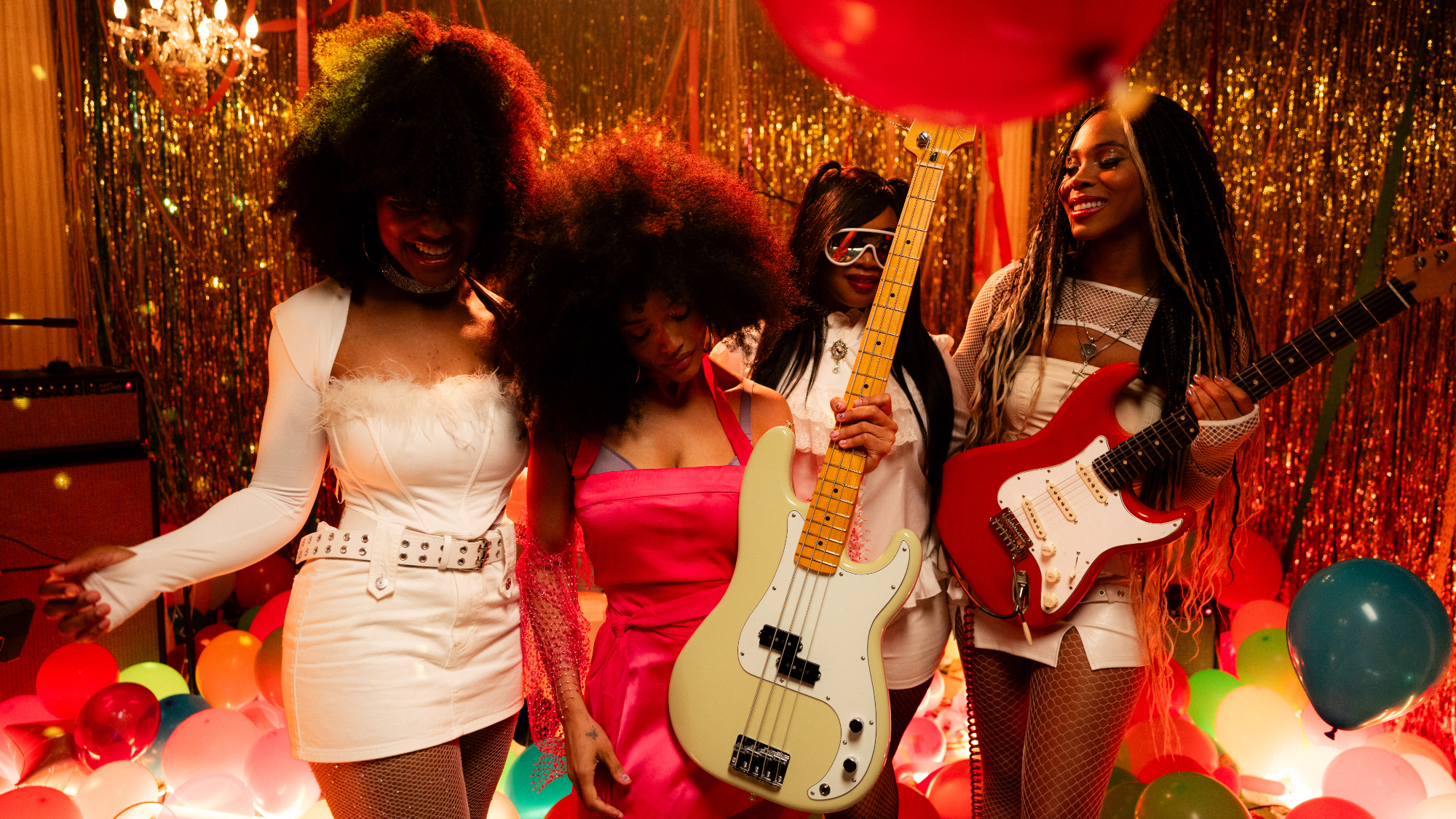
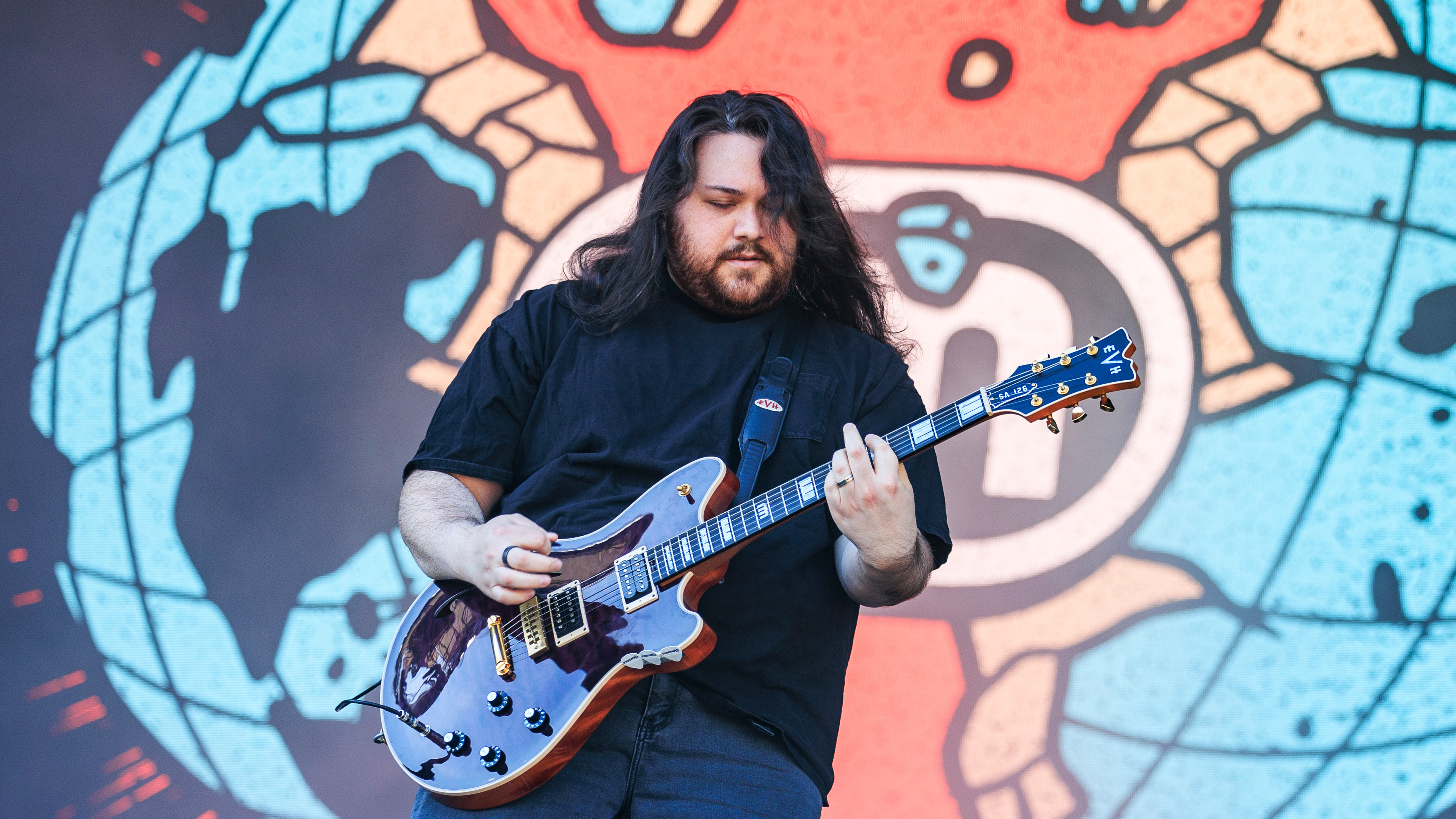
Moving on to the subject of amplifiers, April proclaims that she is currently relying on modern modelling technology to achieve her fierce and ferocious live sound.
“I'm in my amp modeller era,” laughs Kae. “I've been really into amp modellers this past year because we used Quad Cortex live. Then, for my at-home stuff, I've been using the Guitar Rig 7. Also, in the videos, I use the Fender Bassman, April clarifies.”
“I'd say if I'm going into a studio, I usually request the Fender Bassman. But for the record, I am a big Galleon Kruger amp fan because I started in jazz – so it's like those two. I typically use my Galleon Kruger at home to practice because it's for me and then Fender Bassman because they're easy to get. They're durable, and I like the amp – I've played it forever. So I definitely like the Fender Bassman as an amp.
“That said, I've been really [getting] into amp modellers. I like the Positive Grid amp. It's not the cheapest to recommend for beginners, but I recommend it because it gets you so excited to play. So when beginners ask me for a new one, I'm like, you know, the cheapest thing you can find or the Positive Grid because it's so user-friendly. It feels like a game sometimes – there are so many different things you can do and it's really well-made, great customer service, great company.
“I'm pretty flexible with amps, but I really have been into amp modelling lately because it gets me excited.“
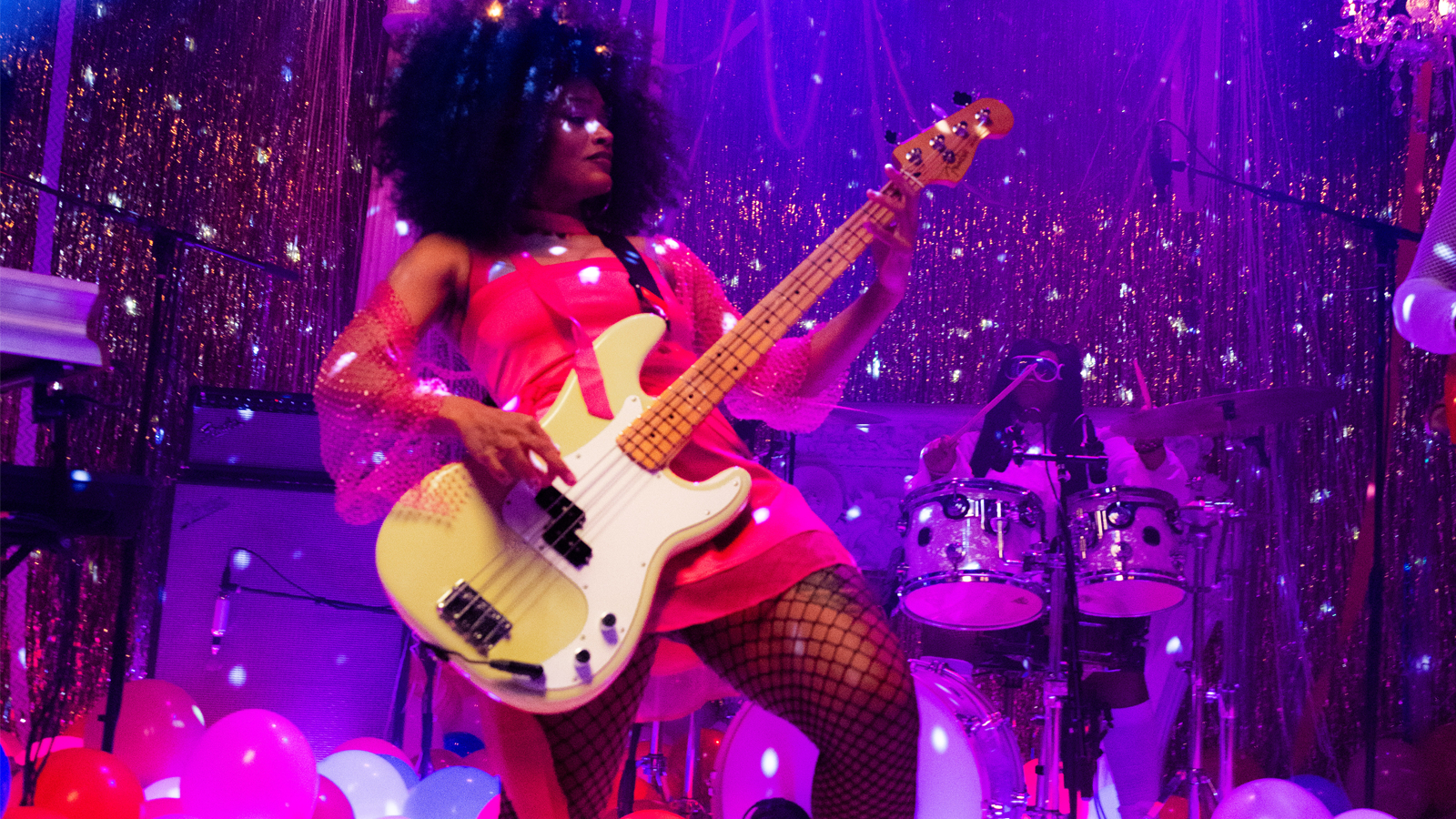
I optimize my social media content for phones because that is what I need. I can't please everybody, right?
Of course, as amp modellers are playing such a large role in her current rig, we had to ask about effects and what signal processing April likes to apply to her bass tracks.
“There are a lot of answers to that question, I guess. I do a lot of different things,” admits April. “For Fever 333, I have been really having fun with octaves. So what we do live that's really fun is we'll put in the octaves below what you can even hear and that mixes with the 808.
“As a band, we love to hear the bass on stage. Like, it is loud and so we have fun with it. Obviously, the distortion plays a big role, but adding in those octaves has been really cool. So I think that's the main thing that I've been enjoying. Then also the pitch shifting down, like, hella low. Our last song goes so hard. Whenever we go into an arena or a stadium, I'll play the low E and just be like, ‘I am the ruler of the universe!’ It's so sick,” laughs Kae.
“This leads me to the internet – which is completely different. I was thinking about this because you really have to mix bass differently [to guitar]. This is an important topic because we have to mix for phone speakers [nowadays] – but they sound like sh*t. You can't hear the bass. Like I'll mix something for a phone, and then I'll play it for a friend, and he'll be like, ‘I can't hear the vocals.’ You can't hear the lyrics because it's so muddy, because you have to have these certain frequencies to cut through on a phone that then will muddy the f**k out of the sound on any other device.
“I optimize my social media content for phones because that is what I need. I can't please everybody, right? And it’s in my comments. Half the people are like, ‘This sounds amazing’ and some people, if they're listening with headphones, think the tone sounds whack as f**k.
“That's one of the things that's been really important for me is EQ for social media and compression. And again, sounds super basic, but I try to always talk about that. Because if someone's reading this interview, chances are they are interested in that information because it's extremely valuable.
“I still cut everything below 80Hz. I'm sorry headphone users, but I still do because you can't hear it on the phone – and that's what the world is. Of course, mixing a song becomes much more difficult when you want it [to be listened to] on multiple devices and that leads me to point three, which is the Fender.
“I think really using that amp tone made a big difference. And getting those high frequencies to cut through, pulling those through, and going back to that classic P-Bass sound that we know sounds great on records. So that's what I did there.
"I didn't add a lot. So a little distortion, compression, EQ, maybe some reverb just to blend it a little bit better. But really, for records, I'm a purist. I'm a classic girl.”
It just occurred to me, I have been producing records since I was 12 years old
It’s immediately clear just how much April cares about the production of everything from her TikTok videos to her bass sound live, so we took the opportunity to quiz Kae on her approach to production and where she learnt these valuable skills.
“Thank you for asking because I feel very validated as a producer,” excitingly answers Kae. “It just occurred to me, I have been producing records since I was 12 years old. When I was 12, I wanted to be a rockstar, and I made my own record on GarageBand. I burned it on CDs. I did the whole thing, the mixing and mastering,” laughs Kae.
Continuing, April speaks on what it’s like to be an independent artist, “I think being an indie musician, there was so much that I had to do myself and had to learn myself back then. I'm feeling emotional [thinking about it]. I didn't even understand people had more money than I'll make in my life, and were working with teams [of people] doing it for them. So yeah, it was definitely out of necessity and out of my love for music and desire to make things. I just knew I wanted to make things.”
Now that April has become the bassist of a well-established band and gained success in her own right, things have changed, giving the bass player access to more resources than ever before – as Kae tells us, she has very high expectations when it comes to production.
“Now I'm at the point where I am working on my own music and I'm excited to work with producers. Now that I do have access to the mainstream music industry, I have a very high bar. People have to be better than me to be worth my money. I'm in a great position where I can't get taken advantage of. I have a lot of my own resources as a producer, and I know these things.”
The Player II Series is available now; for more details, head over to Fender. Fever 333’s new single, New West Order, is out now, and you can see April live with the band across the US and Europe this summer. Check out Fever333.com for more details.
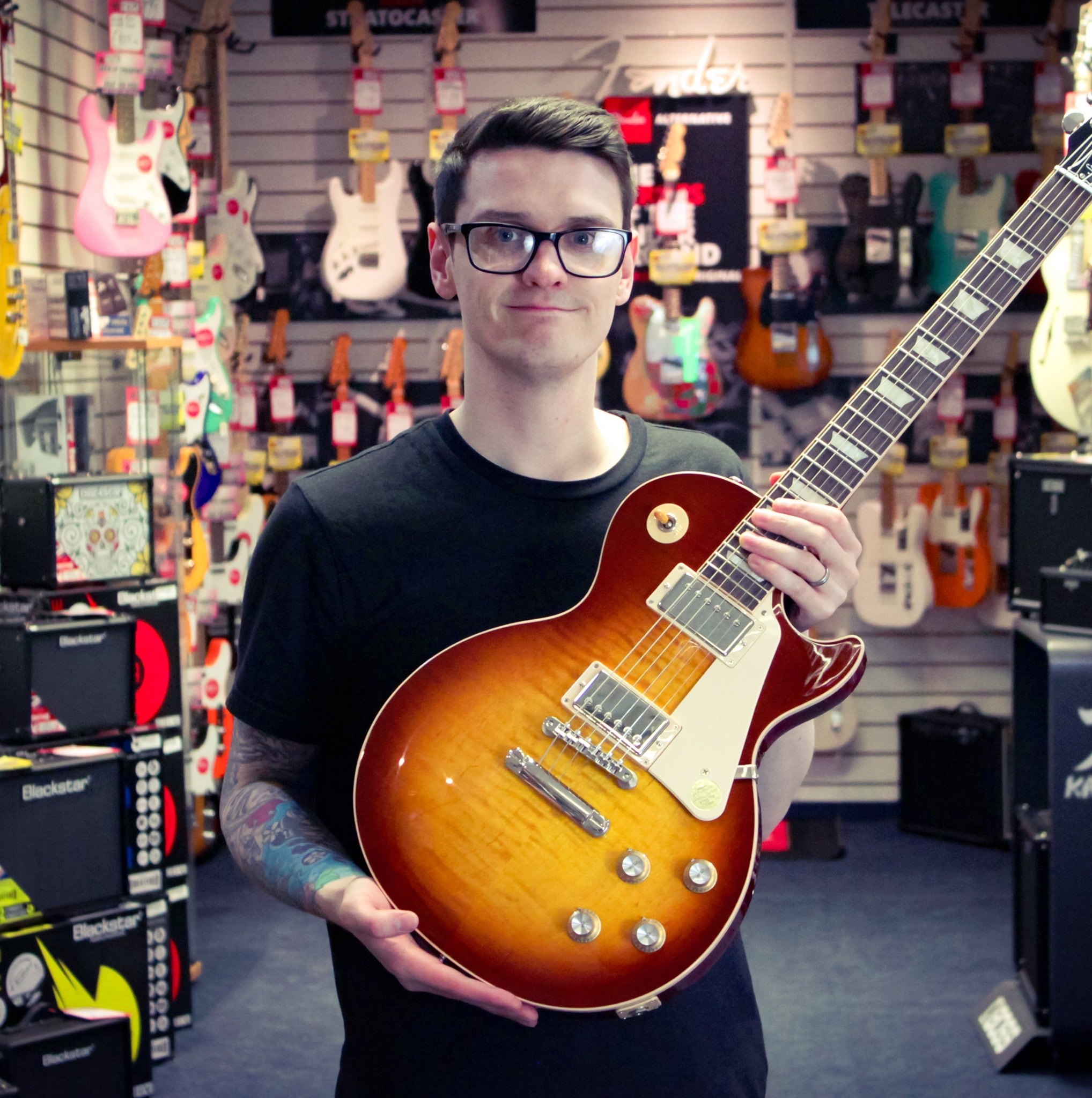
I'm a Senior Deals Writer at MusicRadar, and I'm responsible for writing and maintaining buyer's guides on the site. As part of my role, I also scour the internet for the best deals I can find on gear and get hands-on with the products for reviews. My gear reviews have been published in prominent publications, including Total Guitar, Guitarist, and Future Music, as well as Guitar World.com. I've also had the privilege of interviewing everyone from Slash to Yungblud, as well as members of Sum 41, Foo Fighters, The Offspring, and many more.
In a previous life, I worked in music retail, selling everything from digital pianos to electric guitars. I'm also a fully qualified sound engineer who holds a first-class Bachelor's degree in Creative Sound Production from the University of Abertay.


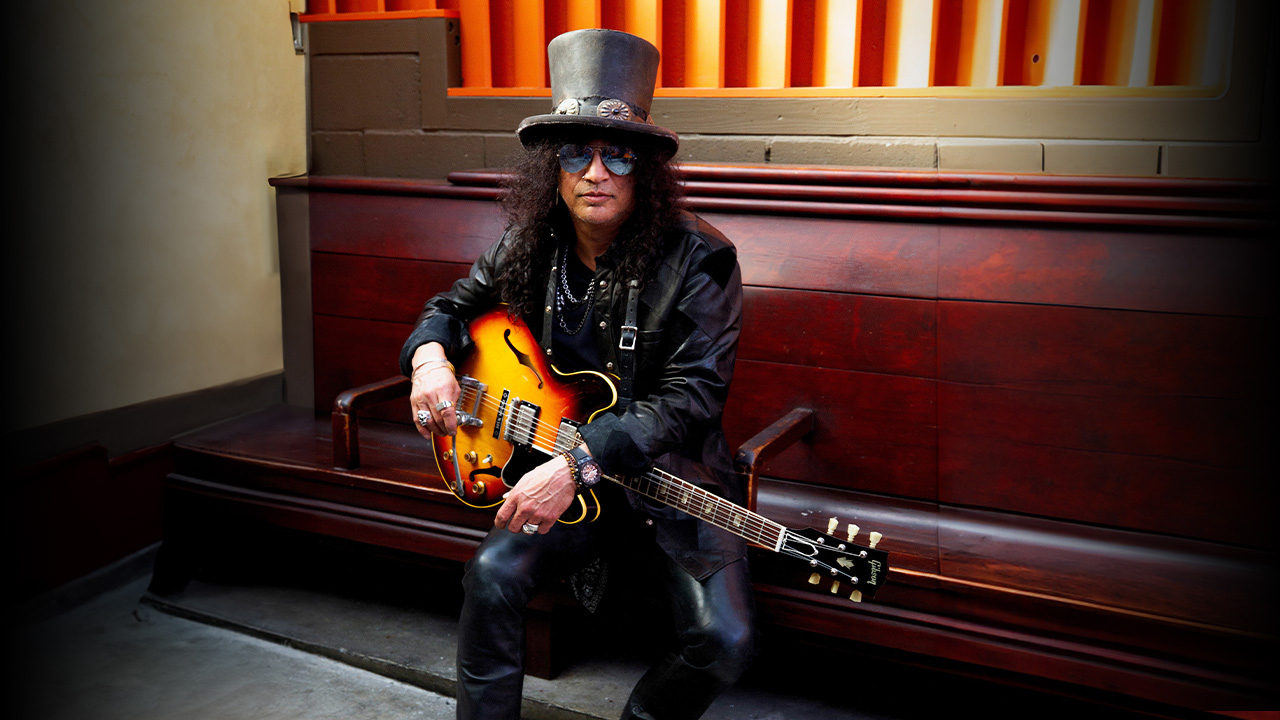
![FEVER 333 - NEW WEST ORDER [OFFICIAL VIDEO] - YouTube](https://img.youtube.com/vi/4KDRlktxg6I/maxresdefault.jpg)